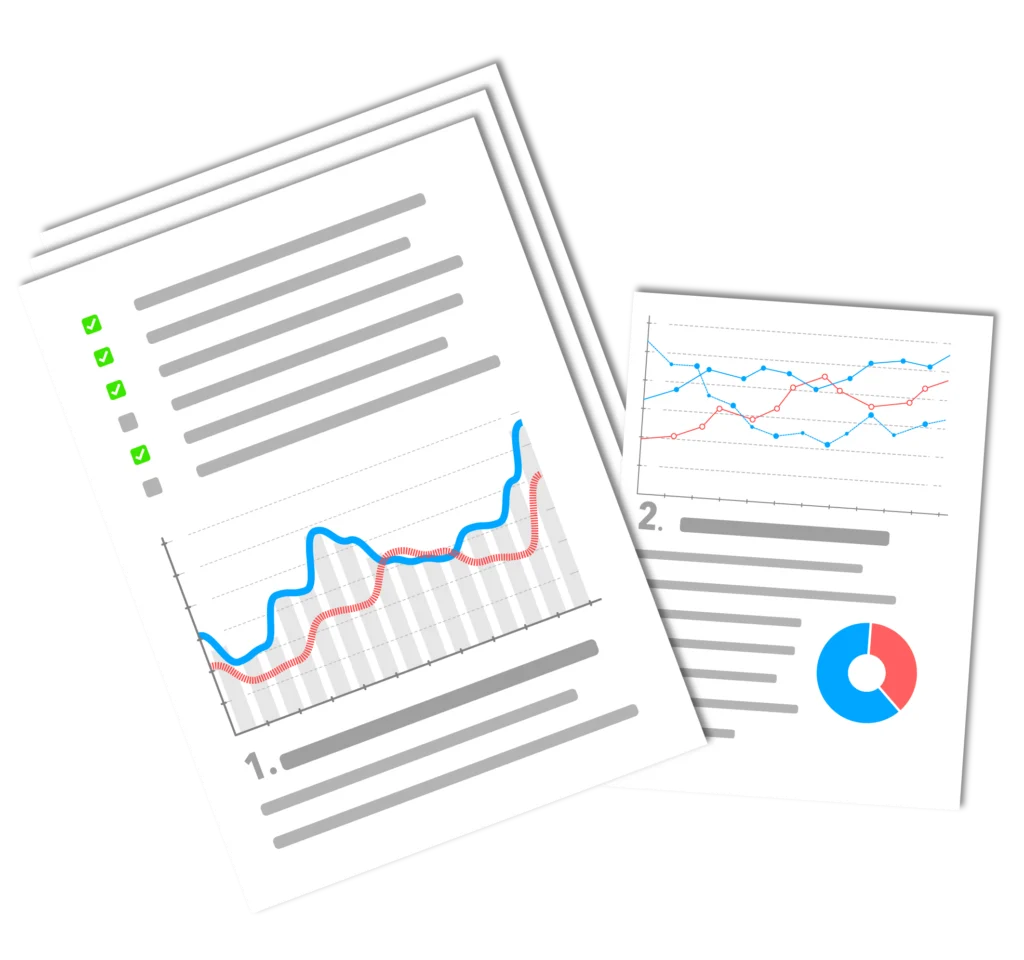You probably know the situation: You click on a link, but instead of landing on the desired page, an error appears. This indicates that the desired page is not available. Something along the lines of 'Error 404 - Page could not be found'. A 404 error is the standardized HTTP status code.
The message is sent from the web server of an online presence to the web browser that sent the HTTP request. The Browser then displays this error code.
Fact:
Links that do not lead anywhere are called 'dead links' or 'broken links'. The HTTP status code 404 is often referred to as 'error 404', 'HTTP 404' or '404 code'.
Error 404: What does the error message mean and how best to use it?
First of all, a brief overview of possible Status codes.
Types of Status codes
The following are the most frequently returned Status codes listed:
- 200 OK: The page you requested was found.
- 301 Moved permanently: The page you requested has moved permanently from the position you requested (position A) to another position (position B).
- 302 FoundThe page you requested has temporarily moved from the position you requested (position A) to another position (position B).
- 404 - Not FoundThe server from which you are requesting the page has confirmed your request, but the page you requested could not be found.
Error 404 is an ambiguous status code. The server cannot find the website it is looking for, but does not attempt to give the reason for this.
We have collected information on error messages and show you how to create your own 404 page.
How does a '404 error' occur?
Der typische Auslöser für einen Error 404 ist, wenn Webseiteninhalte entfernt oder in eine andere URL verschoben wurden. Es gibt aber noch weitere Gründe, warum eine Fehlermeldung auftreten kann. Dazu gehören:
- The URL oder ihr Inhalt (z.B. Dateien oder Bilder) wurde entweder gelöscht oder verschoben (ohne dass interne Links entsprechend angepasst wurden).
- The URL wurde falsch geschrieben (während des Erstellungsprozesses oder eines Redesigns), falsch verlinkt oder in den Browser entered.
- The server responsible for the website is not running or the connection is interrupted.
- The requested Domain name cannot be converted to an IP by the domain name system (DNS).
- The entered Domain name does not exist (anymore).
Tote Links bleiben oft über einen längeren Zeitraum bestehen, da die Betreiber keine Ahnung haben, dass die verlinkten Inhalte gelöscht oder verschoben wurden. Viele Websites erscheinen immer noch in den Suchmaschinen-Ergebnisseiten (SERPs), obwohl sie nicht mehr online verfügbar sind (oder zumindest nicht unter der angegebenen URL).
Andere verlinkte Websites wie Blogs, Newsportale usw. werden oft nicht darüber informiert, dass die Website entfernt wurde oder nun unter einer neuen URL zu finden ist. Viele Webseitenbetreiber überprüfen ihre externen Links außerdem nicht regelmäßig, so dass ein funktionierender Link leicht zu einem toten Link werden kann.
How to fix the "Error 404"
The appearance of a 404 page does not necessarily mean that the user is looking for a Content is not available.
In many cases, the solution to the original error is easy to find. This allows the visitor to be quickly redirected to the website they were originally looking for. So how exactly can you achieve a 404 error fix? We recommend trying these solutions (in the order they are listed):
Reload the pageError 404 may have occurred for the simple reason that the page has not loaded correctly. This can be easily fixed by clicking on the "Refresh" button in your Browser be achieved.
Check the URL: Möglicherweise hat sich ein Fehler eingeschlichen. Unabhängig davon, ob Sie die URL-Adresse manuell eingegeben haben oder über einen Link geleitet wurden. Aus diesem Grund sollten Sie den angegebenen Pfad der Website überprüfen. Es kann sein, dass entweder Sie oder die Person, die den Link eingegeben hat, sich vertippt hat.
Go back through the directory levels: For example, if a URL der folgenden Struktur beispiel.de/Directory1/Directory2/Directory3 eine 404-Fehlerseite verursacht, dann können Sie jederzeit zur vorherigen Verzeichnisebene zurückkehren. In diesem Beispiel: beispiel.de/Directory1/Directory2. Alles, was Sie tun müssen, ist, das letzte Verzeichnis in der URL zu löschen. Der Link für die gesuchte Seite sollte auf der vorherigen Seite sichtbar sein.
Use the search function of the website: Many websites offer a search function as part of their Homepage an. By entering one or more keywords, it can help you find the specific page you are looking for.
Use a Search EngineYou also have the option of finding a website via the website of your choice. As long as the page you want exists, you should find it by entering the website domain and/or a Keyword-transcription of the topic.
HTTP 404 errors can affect the ranking and reputation of a website.
Search engines use so-called crawlers to check websites. If Google, Bing, etc. determine that the website has a conspicuously large number of Error 404 error pages, the "impression" will logically be negative. If many crawler queries are answered with 404 codes, they will assume that the website is not very well maintained.
Dead links influence the Ranking of a website and Google can reduce its ranking in the SERPs or even stop indexing it if too many 404 error pages occur. This can lead to a significant drop in traffic to the website.
In addition, a website with many dead/defective pages usually leads to the user losing trust in the website. The result will most likely be a high Bounce rate be
How to identify 404 error pages on your own website?
It is important for website operators to prevent HTTP Error 404 pages. This applies to internal 404 error pages on your own website as well as external 404 error pages on other websites. There are numerous free tools that can help you find these broken links more easily. Three of the best and most popular are
Google Search Console (formerly known as "Google Webmaster Tools"): If you already have a Google account and your website is registered there, you should use the Google Search Console option. Any 404 errors found by the Google crawler are displayed in the web tool and can also be marked as corrected here. With additional functions, you can find errors in robots.txt files and correct them with the help of Crawling-Find out how often your website was crawled by Google crawlers.
Dead Link Checker: One of the easiest and fastest tools for finding internally and externally linked 404 pages is Dead Link Checker. With this web app you simply enter the URL der zu inspizierenden Website ein und starten dann den Check. Hier haben Sie die Möglichkeit, eine einzelne Webseite oder eine ganze Seite zu überprüfen. Die App listet alle verfolgten Fehlerseiten mit Status codes and URL on.
W3C Link Checker: Dieses Online-Tool des World Wide Web Consortium (W3C) ist besonders detailliert, wenn es darum geht, einzelne Webseiten zu testen. Das führt dazu, dass der Prozess die Links zu überprüfen länger dauert als bei anderen Webseiten. Der W3C Link Checker funktioniert genau wie der Dead Link Checker: Sie geben die URL ein und lassen das Tool den Rest erledigen. Es ist auch möglich, weitere Details hinzuzufügen.
Create a 404 error page
Some Content Management Systems (CMS) like WordPress, Joomla and Drupal automatically generate a 404 error page when the URL einer Website nicht gefunden werden kann. Die HTTP 404-Seite ist nur eine einfache Standardfehlermeldung, aber die meisten von ihnen können mit speziellen CMS-Erweiterungen (Plugins) personalisiert werden.
If your CMS does not allow you to create or modify your own 404 page, or if your website is based solely on HTML, PHP, etc., things get a little more complicated. You can create an error page as follows:
- Create an error page ('404.html' or '404.php') in the root directory (if none is already available).
- Open the .htaccess-file (or create one if needed) in the root directoryenter them in 'ErrorDocument 404 /404.html' and save the change. The error page is generated with this code.
- To see if it works, try clicking on a unavailable website to access. Now the Error 404 error message should appear in the Browser appear.
Why should you personalize your 404 error page?
Of course, it is better to have a standard 404 error page than none at all. However, a customized 404 page for your website should be preferred. This is partly because you can be sure that users will receive an accurate HTTP status code. For example, if the requested Content is no longer available on the website, this should be communicated with the message "410 Gone". The visitor then knows that this content has been permanently deleted.
On the other hand, you can provide a specially designed error page with related links. So links to your Homepage or subpages whose content overlaps with that which the visitor originally requested. You can even add a search function to your website. By taking these additional measures and creating incentives, you can help the Bounce rate of the users.
Get creative! Personalized/creative 404 messages have been shown to keep users on a website. When done correctly, error pages have a certain potential.
So make sure that the design of the error message matches the style of your website. You have already laid the foundation for a good 404 error page!


